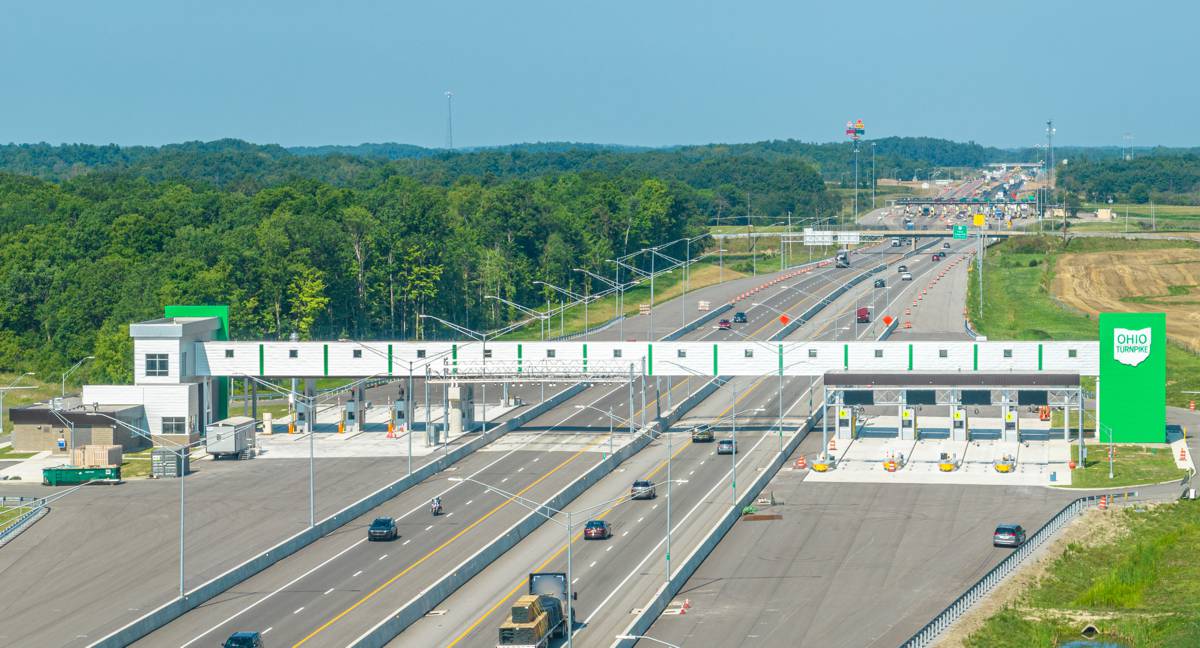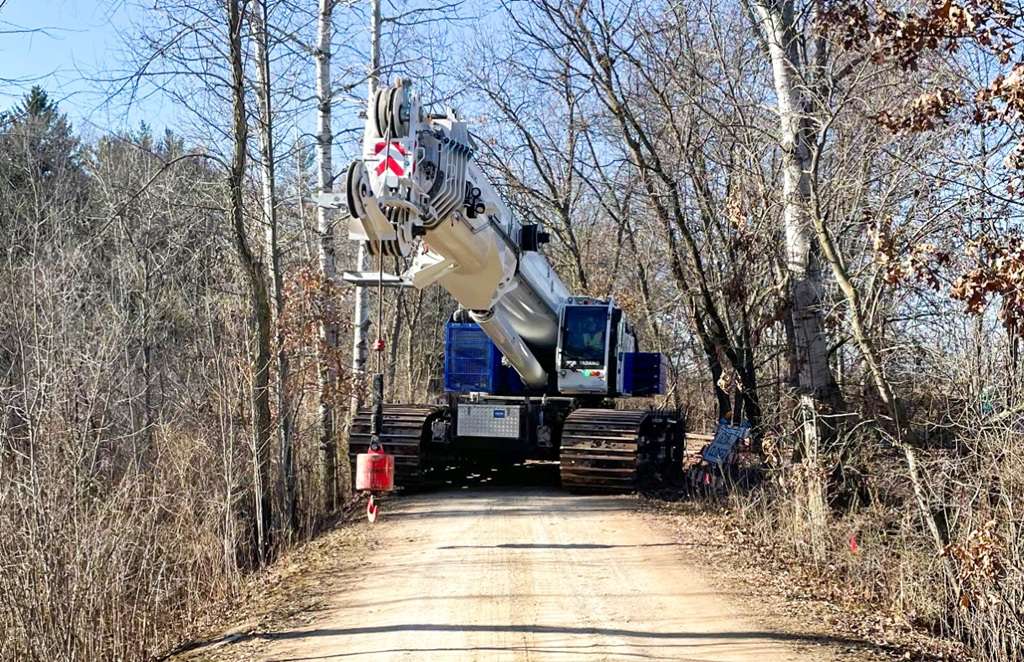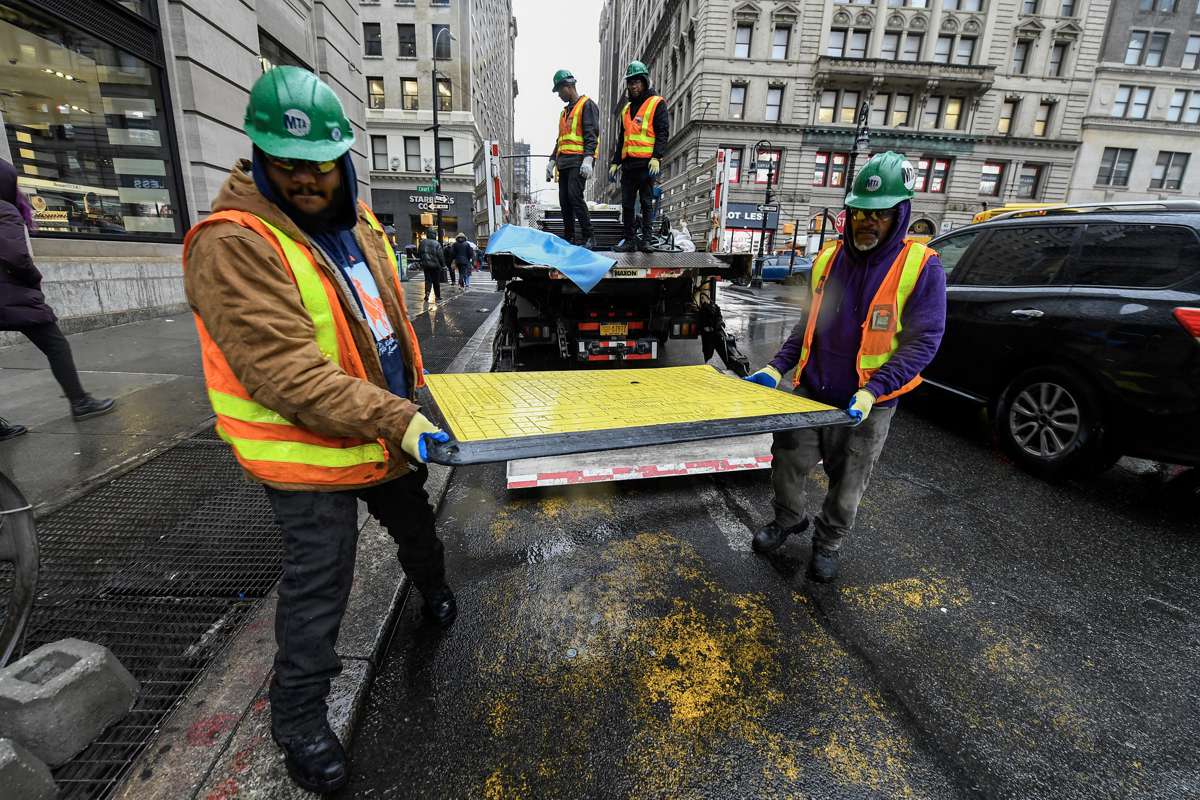Partial runway reconstruction for Detroit Metro Airport
Milling the old asphalt runway structure becomes key
It was almost as though the $225-million runway that the Detroit Metropolitan Wayne County Airport (DTW) had added in 2001 was jinxed from the get-go. Expected to last 30 years, Runway 4L/22R had issues arise a mere three years later when cracks and flaws in the concrete required maintenance to restore the smooth landing surface. In fact, other concrete paved surfaces constructed in that time frame in Michigan and beyond had similar problems, as the Detroit Free Press reported.
The problem was identified as alkali-silica reaction, or ASR. ASR causes concrete to expand and crack when exposed to moisture over time.
Explanations on how ASR forms include the new cement manufacturing standards because of new environmental standards, highly reactive sand, and the widespread use of winter de-icers on runways and roads.
The Federal Highway Administration said in one its fact sheets that ASR is a widespread problem and major cause of “concrete deterioration” in the lower 48 states and in other countries.
ASR happens when the crushed stone, sand or other materials that make up concrete react with cement paste that has a high level of alkalinity, when moisture is present. The reaction produces a gel, which swells and expands the concrete, leading to cracking and other damage. That damage is compounded as more areas are opened to moisture.
After years of maintenance on the runway, the Wayne County Airport Authority decided it was necessary for a partial runway reconstruction of Runway 4L/22R and associated taxiways. The project called for replacement of the top layer of concrete and a small portion of HMA base under the concrete. The nearly 3½-foot thick structure is built in three layers — 17 inches of concrete, 9 inches of asphalt and 16 inches of crushed stone. The runway is substantial because it is 10,000 feet long (almost two miles) and it is where the jumbo jets, such as the Boeing 747 wide-body commercial jet airliner and cargo aircraft land.
The Airport Authority had allotted a tight 180-day schedule in order to minimize the disruption. DTW is a major international airport in the United States and one of the largest air transportation hubs in the country. In terms of aircraft operations (takeoffs and landings), Detroit Metro is one of the 10 busiest airfields in North America. Runway 4L-22R is one of four parallel runways and among six total runways at Detroit Metro. To say the Wayne County Airport Authority was nervous about taking a major runway out of service for six months would probably be an understatement.
The complete runway reconstruction project included the asphalt shoulders, and Taxiways A and Q. The reconstruction of the associated taxiway system is designed to provide a safe connection for aircraft from the runway to the passenger terminals at the Detroit Metro Airport. In total, the project encompasses 6.5 miles of airfield pavement.
“Basically, what we’re doing is building a runway on the same footprint as the existing runway,” said DTW spokesperson Michael Conway. “We’re not lengthening it, we’re not shortening it, we’re not moving it, we’re rebuilding it in place.”
Ajax Paving Industries, Inc., Troy, Mich. was the prime contractor for the project along with Dan’s Excavating, Inc., Utica, Mich., who was responsible for removing the top concrete layer. The key role of milling the old asphalt base under the existing concrete runways and taxiways and ensuring a consistent, accurate grade for a new three-inch lift of HMA went to Lois Kay Contracting, Saginaw, Mich.
Lois Kay Contracting was established in April of 1980 by Lois Kreager. The company established itself by working on MDOT projects throughout the state. With over 30 years of milling experience, the company has a MDOT pre-qualification rating of $9 million in the milling classification. The company’s milling machine fleet currently includes five Roadtec RX-900e cold planers with 7’2” drums, two Roadtec RX-700e milling machines with 6’6” drums and a variable width 2- to 4-foot Roadtec RX-400e milling machine. Additionally, they own four Wirtgen W 600 DC mills with 2-foot drums.
“We spent the first two weeks of the airport project milling off the 35-foot-wide shoulder on Runway 4L/22R and associated taxiways” stated Ron Coffel, estimator/project manager for Lois Kay Contracting. “For the entire project we removed 475,000 square yards of asphalt shoulders, base and overlays in addition to 350,000 square yards of 3D profile milling with four RX-900e machines running at various locations throughout the site.”
Roadtec RX-900e milling machines are equipped with Caterpillar 950 hp (708 kW) engines and are considered heavy-duty, high production machines by the manufacturer.
“I like the RX-900e because it’s the most powerful mill on the market,” Coffel said. “And our three-track machines are more manoeuvrable, lower in weight, and have less maintenance, than other mills.”
Each of the four mills running on the job had its own three-person crew—a machine operator, supervisor, and a ground support person. The milling machines were equipped with 3D machine control that was designed to provide precise cutting depth of the mill to minimize over-cutting. The system uses a 3D design model, a total station, and on-machine sensors to mill at a fixed or variable depth, depending on job specifications. The 3D design is displayed to the machine operator showing areas that are on, above, or below ideal grade. Comparing the actual drum position and slope with the digital design, the machine control system automatically guides the milling drum to cut the ideal depth and slope without string lines or manual adjustments.
The Roadtec RX-900e milling machines feature a maximum 14-inch cutting depth, but for this runway project Lois Kay Contracting was profile milling to depths of 3- to 5-inches. An approximate 200,000 tons of milling was performed by Lois Kay Contracting on the Detroit Runway 4L/22R project.
“We had a couple of challenges with the Detroit Metro runway project,” stated Coffel. “We had a tight timeline that we stayed ahead of and completed our portion of the project ahead of schedule. We were able to do this with our solid high production equipment, and of course, our hard working crews.
“The second challenge… with Michigan weather being as unpredictable as it is, we needed to hit it hard and have maximum production when the weather was good. We received some rain during the stretch of the project but we worked around it.”
The complete reconstruction of Detroit Metropolitan Wayne County Airport Runway 4L/22R and associated taxiways is nearing completion. The Airport Authority is likely sighing relief.
“With our part of the runway rehab done I can look back and be proud that a company of our size could take a controlling role in an important project of this magnitude and scope,” Coffel concluded. “I believe we performed very well on what was easily our largest milling project for the 2016 season.”
For DTW there will likely be renewed confidence that 747 jumbo jets, which carry 416 to 660 passengers, depending on configuration, will be safely landing on its Runway 4L/22R air strip.
Article by Jeff Winke.




















